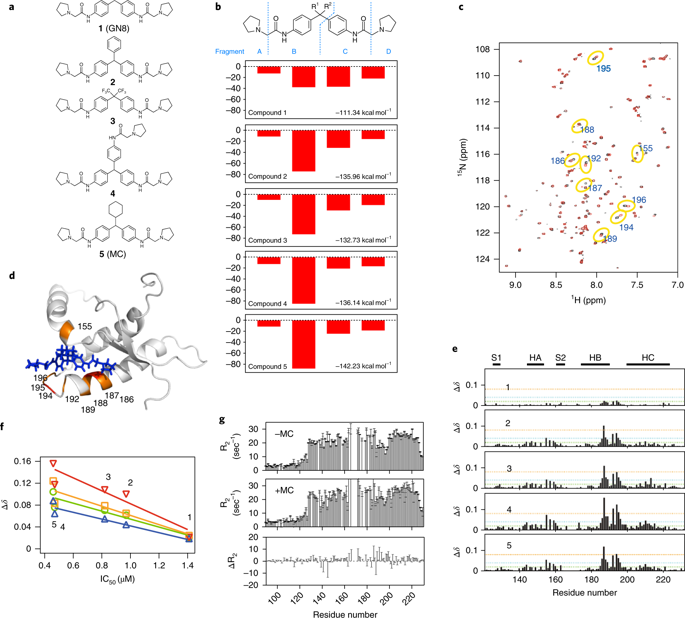伝達性海綿状脳症に対するデザイナー分子シャペロンがマウスおよびマカクの疾患進行を遅らせる
A designer molecular chaperone against transmissible spongiform encephalopathy slows disease progression in mice and macaques
2019年2月11日 Nature Biomedical Engineering 3 : 3 doi: 10.1038/s41551-019-0349-8

伝達性海綿状脳症(TSE)は、治療法が存在しない致死性の神経変性疾患である。今回我々は、結合シミュレーション、分子動力学シミュレーション、および量子化学計算によって設計した分子シャペロンN,N′-([シクロヘキシルメチレン]ジ-4,1-フェニレン)ビス(2-[1-ピロリジニル]アセトアミド)がTSEの進行を遅延させることを明らかにした。in vitroで、このデザイナー分子シャペロンは、正常な細胞プリオンタンパク質を安定化させ、感染細胞中のプリオンを排除し、薬剤耐性株の形成を予防し、プリオンと異常な凝集体との相互作用を直接阻害することが、リアルタイムQUIC法(RT-QUIC;real-time quaking-induced conversion)およびIVC-NMR(in vitro conversion NMR)によって示された。プリオン感染マウスにこのシャペロンを週1回腹腔内注射すると生存期間が延長され、ウシTSEに感染させたカニクイザルにこの化合物を週1回静脈内投与すると、神経症状および精神症状の発現が遅延し、脳脊髄液中の疾患関連バイオマーカーの濃度が低下した。合理的に設計されたこの新たなシャペロン化合物は、さまざまなプリオンタンパク質株と結合してTSEの病状を改善する治療薬をもたらす可能性がある。
Corresponding Author
Transmissible spongiform encephalopathies (TSEs) are fatal neurodegenerative diseases that lack therapeutic solutions. Here, we show that the molecular chaperone (N,N′-([cyclohexylmethylene]di-4,1-phenylene)bis(2-[1-pyrrolidinyl]acetamide)), designed via docking simulations, molecular dynamics simulations and quantum chemical calculations, slows down the progress of TSEs. In vitro, the designer molecular chaperone stabilizes the normal cellular prion protein, eradicates prions in infected cells, prevents the formation of drug-resistant strains and directly inhibits the interaction between prions and abnormal aggregates, as shown via real-time quaking-induced conversion and in vitro conversion NMR. Weekly intraperitoneal injection of the chaperone in prion-infected mice prolonged their survival, and weekly intravenous administration of the compound in macaques infected with bovine TSE slowed down the development of neurological and psychological symptoms and reduced the concentration of disease-associated biomarkers in the animals’ cerebrospinal fluid. The de novo rational design of chaperone compounds could lead to therapeutics that can bind to different prion protein strains to ameliorate the pathology of TSEs.

